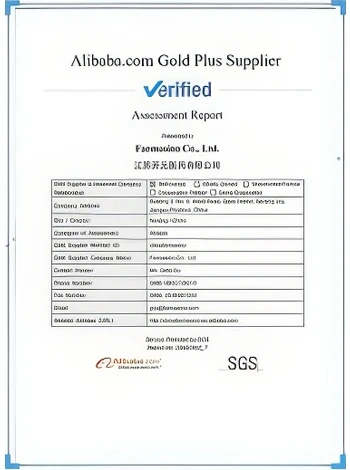



what is the chemical used for coagulation in water purification
The Role of Coagulation in Water Purification
Water is an essential resource for all forms of life, and its purification is crucial for human health and environmental sustainability. Among the various processes involved in water treatment, coagulation plays a pivotal role. This article explores what coagulation is, the types of chemicals used for the process, and its significance in ensuring clean drinking water.
Understanding Coagulation
Coagulation is a water treatment process that involves the aggregation of small particles into larger clusters, or flocs, which can then be removed from the water. This process is particularly important in the treatment of surface water, which often contains a variety of impurities, including suspended solids, organic matter, and microorganisms. Without coagulation, these contaminants can make water unsafe for human consumption.
In practical terms, coagulation is usually followed by flocculation, which allows the created flocs to grow larger and settle more effectively during the sedimentation process. The entire process is essential for reducing turbidity, which is a key indicator of water quality.
Coagulation Chemicals
The chemicals used for coagulation in water purification are known as coagulants. The most commonly used coagulants are salts of aluminum, ferric compounds, and certain organic polymers. Each of these coagulants has its specific properties and applications
1. Aluminum Sulfate (Alum) This is perhaps the most widely used coagulant in water treatment. When added to water, alum reacts to form aluminum hydroxide, which precipitates and helps to trap suspended particles and bacteria. Its effectiveness and cost-efficiency have made it a staple in many water treatment facilities.
2. Ferric Chloride This is another popular coagulant, particularly for its ability to perform well in a variety of pH conditions. Ferric chloride reacts similarly to alum, forming ferric hydroxide, which can efficiently remove suspended solids and organic contaminants from water.
what is the chemical used for coagulation in water purification

3. Polymeric Coagulants These are synthetic coagulants that have gained popularity due to their effectiveness in low concentrations and their ability to work across a pH range. They often produce smaller flocs that settle more quickly, making the overall water treatment process more efficient.
4. Calcium Hydroxide Sometimes referred to as lime, calcium hydroxide can also serve as a coagulant, especially in conjunction with other chemicals. It helps adjust the pH of water, making it conducive for other coagulants to work effectively.
The Importance of Coagulation
Coagulation is critical not only for achieving clear and aesthetically pleasing water but also for ensuring safety. By removing harmful pathogens, heavy metals, and particulate matter, the coagulation process helps reduce health risks associated with waterborne diseases. This is particularly important in areas where access to clean drinking water is limited, as proper treatment can significantly decrease morbidity rates.
In addition to public health benefits, coagulation reduces chlorine demand during subsequent disinfection processes. By removing organic material and other precursors to disinfection byproducts, the effectiveness of chlorine in killing pathogens is enhanced, and the formation of harmful compounds is minimized.
Environmental Considerations
While coagulation is vital for effective water purification, it is also essential to consider the environmental impact of the coagulants used. Certain coagulants, such as alum, can contribute to the release of aluminum into water systems, which, in high concentrations, can be potentially harmful to aquatic life. Therefore, modern water treatment plants often focus on optimizing dosages and exploring alternative coagulants that may pose less risk to the environment.
Conclusion
In summary, coagulation is an integral process in water purification, utilizing specific coagulants to ensure that water is free from harmful impurities. The choice of coagulant can significantly affect the efficiency of water treatment operations and the quality of the final product. As the demand for clean and safe drinking water continues to rise globally, advancements in coagulation technologies and practices will play a vital role in ensuring sustainable water management for future generations.
-
Why Sodium Persulfate Is Everywhere NowNewsJul.07,2025
-
Why Polyacrylamide Is in High DemandNewsJul.07,2025
-
Understanding Paint Chemicals and Their ApplicationsNewsJul.07,2025
-
Smart Use Of Mining ChemicalsNewsJul.07,2025
-
Practical Uses of Potassium MonopersulfateNewsJul.07,2025
-
Agrochemicals In Real FarmingNewsJul.07,2025
-
Sodium Chlorite Hot UsesNewsJul.01,2025










